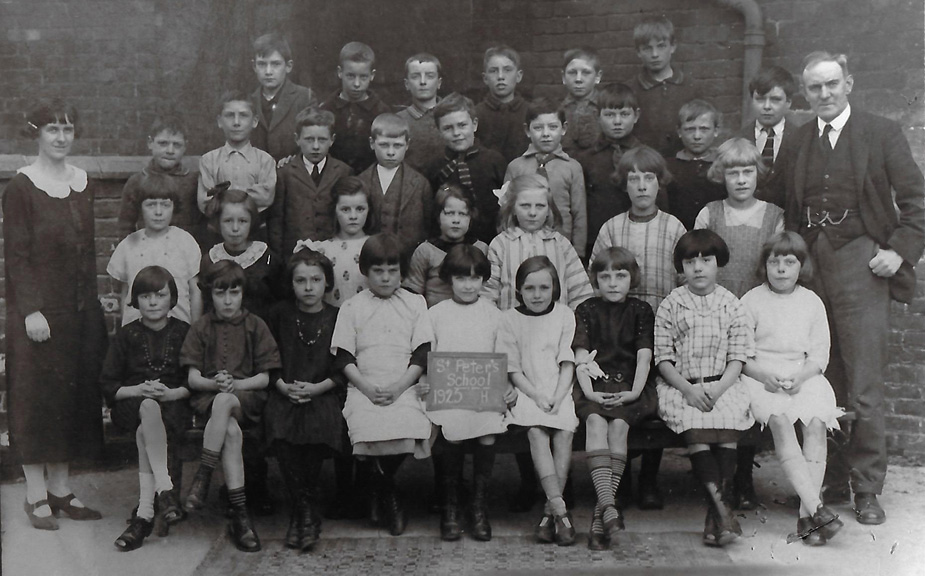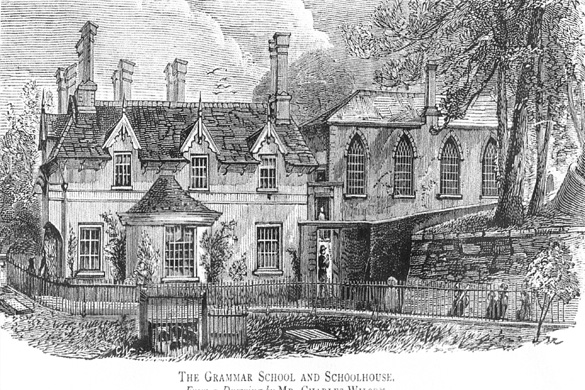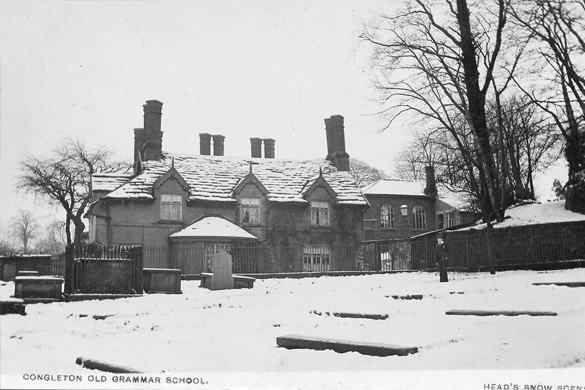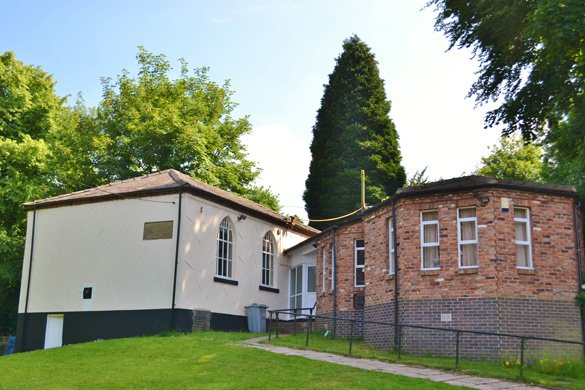Congleton Grammar School
The earliest evidence of a school in Congleton comes from the Corporation Accounts for the reign of Elizabeth 1. It was free for the sons of Freemen and Burgesses of the town. In the last decade of Elizabeth`s reign it was re-sited outside the south east section of the churchyard. The Corporation accounts show that some of the timbers of the old school were carried to the new one. The new one had a clay floor which was later covered with bricks.
From the reign of Elizabeth I until reign of George I masters sometimes also held the post of minister of the town chapel. Apart from basic literacy the boys learned Latin and Greek. The boys had some diversion from their ordinary studies. On Shrove Tuesday 1620 the Corporation paid for a musician to come from Chester to play for the boys as they put on their play. And at the end of every term they were given cakes and wine. The teaching method was revised by the last and probably most effective of the Ministers to also hold the position of Schoolmaster, Ralph Malbon. He was Schoolmaster from 1712 to 1721.
By 1720 it was flourishing and had two masters, one of whom lived in the house built next to the school. It was rebuilt and enlarged and a schoolmaster`s house added at this time. By this time it was also taking in boarders who lived in the master`s house. During the Mastership of Thomas Malbon, Ralph`s son, the school steadily declined. The corporation had it rebuilt in 1814, as shown in Charles Wilson`s 19th century sketch, on land given by Sir Edmund Antrobus. The photograph c1900 shows it had not changed in over 50 years.
It closed in 1901 after the death of W B Grix, its last master. The Corporation and some leading towns people debated resurrecting it, but the cost of repairs to the building put them off. The local authority did not think that the standard of teaching made it worthy of taking it under their control.
It was temporarily reused in 1949 to cope with the post war “bulge” of junior pupils. The schoolmaster`s house was pulled down in 1955.
The school became St Peter`s Parish Room. This was extended in 1967 and now houses the parish office. The school room is used by the church and as a meeting place for a Mum`s and Toddlers group.



